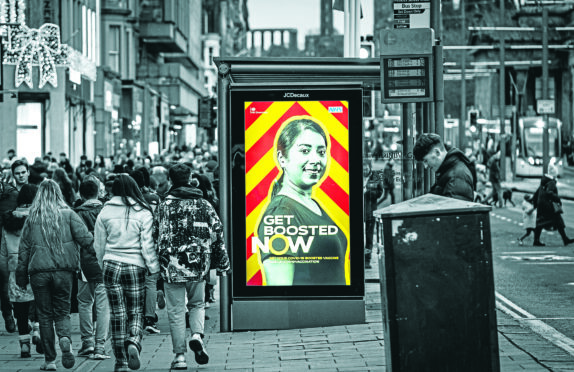
An NHS Scotland guide to Covid should be updated to show new symptoms of Omicron, according to virologists.
Experts say symptoms of the new and dominant variant are more like a common cold but the NHS self-help guide only instructs users to self-isolate and book a test if they have a temperature, cough or loss of taste and smell.
If users don’t report these symptoms they are told they are not at risk of having Covid. However, the Scientific Advisory Group for Emergencies said last week there was evidence of changes in reported symptoms with Omicron infection.
Analysis of Omicron cases in London by the Zoe Covid app show the most common symptoms are runny nose, headache, fatigue, sneezing and sore throat. More than 80% of new Covid cases are Omicron, the First Minister said last week, with the previously dominant Delta variant making up the remaining cases.
Only one Omicron patient needed intensive care since first Scots cases
However, the NHS self-help guide to Covid hasn’t been updated since October 2021, before Omicron emerged.
Dr Christine Tait-Burkard, a virologist at Edinburgh University, said the symptoms of Omicron are quite different from Delta and said the symptoms listed on nhsinform.scot should be updated.
“This highlights the move of the virus to more of a common cold, which is also supported by animal experiments where we see Omicron having difficulties infecting the lungs but better at infecting the upper respiratory tracts, which is indicative of a cold and reflects the symptoms we see.
“Therefore, it would be recommended to adjust the symptoms on the NHS website. The best advice would probably be a combination of at least three to five of the most common Zoe symptoms.”
Professor Tim Spector, lead scientist on the Zoe Covid study, has also said Omicron symptoms are more similar to a common cold. The epidemiologist of King’s College London said: “Zoe data clearly show the most important symptoms are no longer a new continuous cough, a high temperature or loss of taste or smell. We need to change public messaging urgently to save lives as half of people with cold-like symptoms now have Covid.”
The Scottish Government said the information was kept under review but a high temperature, a new continuous cough or a loss or change to sense of smell or taste are currently used to define Covid as they are the most reliable indicators of infection with the virus to this point.
It added: “We recognise there is a wider range of possible symptoms, which Public Health Scotland guidance to health protection teams makes clear, and individuals are able to report wider symptoms in their engagement with Test and Protect.”

Enjoy the convenience of having The Sunday Post delivered as a digital ePaper straight to your smartphone, tablet or computer.
Subscribe for only £5.49 a month and enjoy all the benefits of the printed paper as a digital replica.
Subscribe